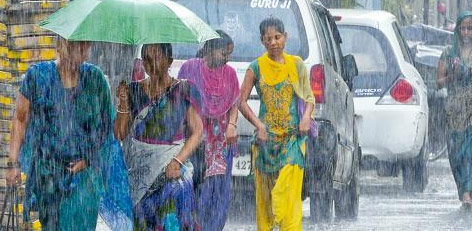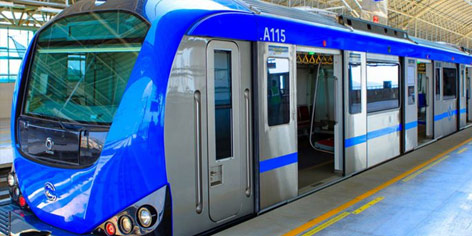No. of views : (7191)
Shortfall in the northeast monsoon seasonal rains, 24% in TN & 55% in Chennai
Posted on: 31/Dec/2018 4:21:43 PM

The disappointing fact that the northeast monsoon seasonal rain during 2018, on which the state of Tamil Nadu is so largely dependent on, has failed the state completely cannot be denied!
The details of this utter monsoon seasonal rain failure have been explained by the Director of the Chennai Meteorological Centre, S. Balachandran. He explained in this regard:
�Analysing from a total aspect, the northeast monsoon seasonal rains are registered at 89%. When compared with the average figures, this falls short by 24%. In a similar way, when comparing with the average figures, the shortfall of the northeast monsoon seasonal rains in Chennai Metro City is 55% - in actual figures, against expected average rainfall of 79 cm, only 35 % have been recorded this year. In Tamil Nadu state, the expected average rainfall is 44 cm whereas the recorded value for this year is only 34 cm.
In Dharmapuri district, the shortfall has been 59%. Further, the shortfall has been lesser by more than 50% in the districts of Krishnagiri, Chennai, and Karur,
4 districts have recorded a shortfall of 40% to 50%. In 5 other districts, the shortfall has been 30% to 40%. In 4 districts, the shortfall of rains has been 20% to 30%. In 15 districts, the shortfall has been 1% to 19%.
Only the district of Tirunelveli has recorded a surplus rainfall as compared to the average � it is 11% more. However, as regards the northeast monsoon rainy season, this is lower by 24%.
As compared with the projected long-term predictions by the weather centres, the rains were not as expected. Climate formation has 2 categories � basic climate formation and the moving climate formation.
The long-term weather forecast is made based on the average monsoon seasonal rainfall and the prevailing climate.
Phenomena such as El. Nino and the drifting of the 2 Indian-corner events are the factors which help estimate the extent of the northeast monsoon rainy season.
Short-term weather forecasts consist of announcing the development of cyclonic formats, low-pressure or depression zones formation, depression zones, and storm signal, etc.
As regards the year 2018, it was forecast that El. Nino would form. It was also expected that there would be a beneficial Indian 2-corners movement event.
However, the formation of El. Nino got delayed. The Indian 2-corner event was strong till September. It weakened during the months of October, November, and December. With El. Nino also being absent, adversely affected the possibility of a beneficial northeast monsoon rainy season and thus there has been a shortfall as compared to the average.
As regards the moving climate formation, with the formation of 4 cyclonic formats developing, except for the cyclone Gaja, the other cyclone formats were located at distances not beneficial to the Tamil Nadu region thus leading to lesser humidity in the atmospheric air.
Further, as the phenomena of the thermal convection, cyclonic formats, etc., which formed over the southwest Bay of Bengal did not drift towards the west leading to lower rainfall in Tamil Nadu.
All the above factors have thus led to the 24% shortfall of rain inin Tamil Nadu state. As the climate was not beneficial, the northeast monsoon seasonal rainfall reduced. In Tamil Nadu, only 34 cm rainfall has been recorded as compared to the average of 44 cm.�







